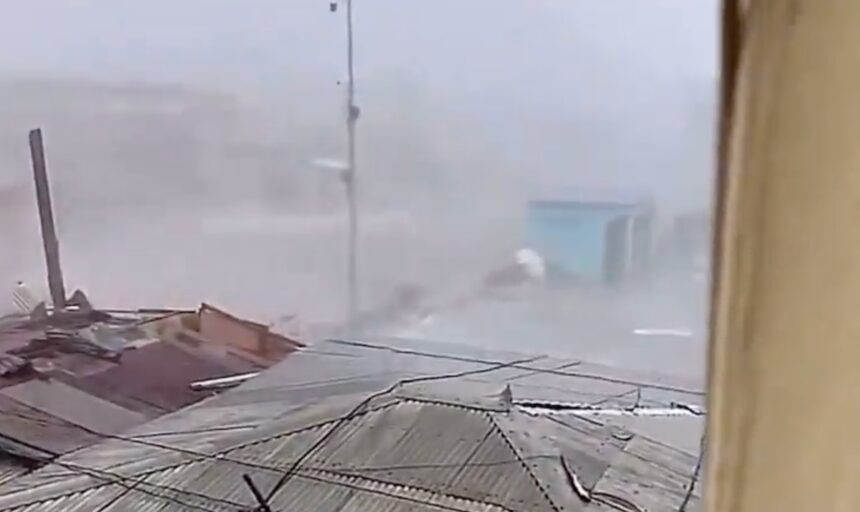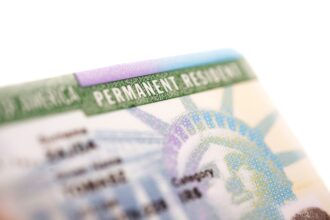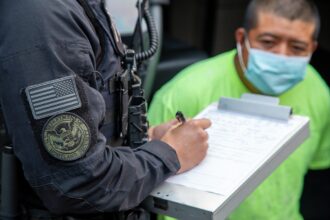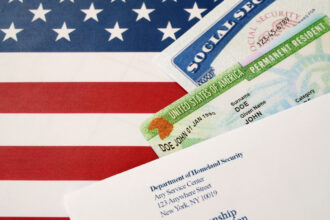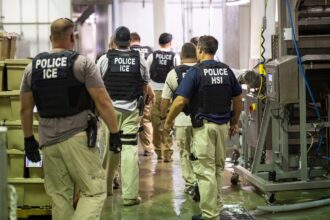Hurricane Melissa, now a monster Category 5 storm on the Saffir-Simpson scale, made landfall Tuesday, October 28, in Jamaica with maximum sustained winds estimated at 295 km/h (185 mph) and a central pressure of 892 millibars, making it one of the strongest cyclones ever recorded in the Atlantic.
The eye of the hurricane arrived at 12:02 local time (17:00 GMT) in the district of Westmoreland, near the community of New Hope, southwest of the island, where mandatory evacuations have already been ordered for low-lying and coastal areas.
Hurricane Melissa makes landfall in Jamaica
🌪️ 🇯🇲Impactantes images from Kingston, Jamaica show the ravages of Hurricane Melisa , which is advancing through the Caribbean with devastating force.
🙏 Solidarity with the affected families.#Huracan #Melissa
pic.twitter.com/JTjQQQVIBdQ– Monica Saade (@MonicaSaadeX) October 28, 2025
The slowness of the hurricane’s movement – approximately 7 km/h – increased the risk of prolonged torrential rains, storm surges of up to 4 meters (13 feet) and massive landslides in Jamaica’s mountainous topography.
theguardian.com
Rainfall could accumulate between 30 inches (76 cm) to 40 inches (1 meter) in elevated areas, increasing the danger to vulnerable communities.
The Jamaican Prime Minister warned that “there is no infrastructure in the region that can withstand a category 5 hurricane”, and the authorities opened more than 800 shelters, although very few inhabitants evacuated in advance.
Why is it relevant to the U.S. Hispanic community?
🚨 The first images of Jamaica🇯🇲 passage of Melissa as a category 5 hurricane.
Images from @GiovanniRDennis. pic.twitter.com/5lIR0L7p2D
– Pamela Cerdeira (@PamCerdeira) October 28, 2025
For those living in the U.S., this event represents more than just a distant phenomenon.
Many Hispanic families have direct ties to the Caribbean, either through family, work or travel.
In addition, Melissa’s projected track includes southeastern Cuba and the Bahamas, with the possibility of indirectly affecting parts of Florida or the U.S. Atlantic coast with storm surge, external rainfall and winds.
So while Jamaica may have the greatest impact, the warning is also strategic for the Hispanic population residing in coastal states such as Florida, Georgia or the Carolinas.
In addition, this hurricane underscores the trend of more intense storms in the Atlantic, linked to warmer surface waters, which has direct implications for residents living in hurricane-risk areas or supporting family members overseas.
What Hispanics Can Do in the U.S.
If you have family members in Jamaica, Cuba or the Bahamas, stay in touch and make sure they know where local shelters and evacuation plans are.
If you live in an area of the U.S. at risk of hurricanes, check your emergency supplies (water, food, medicine, flashlights) and learn where the nearest safe shelters are.
If you are a migrant worker in seasonal activities or live in a coastal area, consider making a family emergency plan: how to communicate, where to meet, what documents to bring.
Follow official sources in Spanish such as the National Hurricane Center (NHC) or the local Red Cross; avoid rumors and unverified content.
Melissa ya se perfila como el huracán más potente de la temporada y posiblemente el más devastador que haya impactado Jamaica en su historia moderna
QuéOnnda.com



